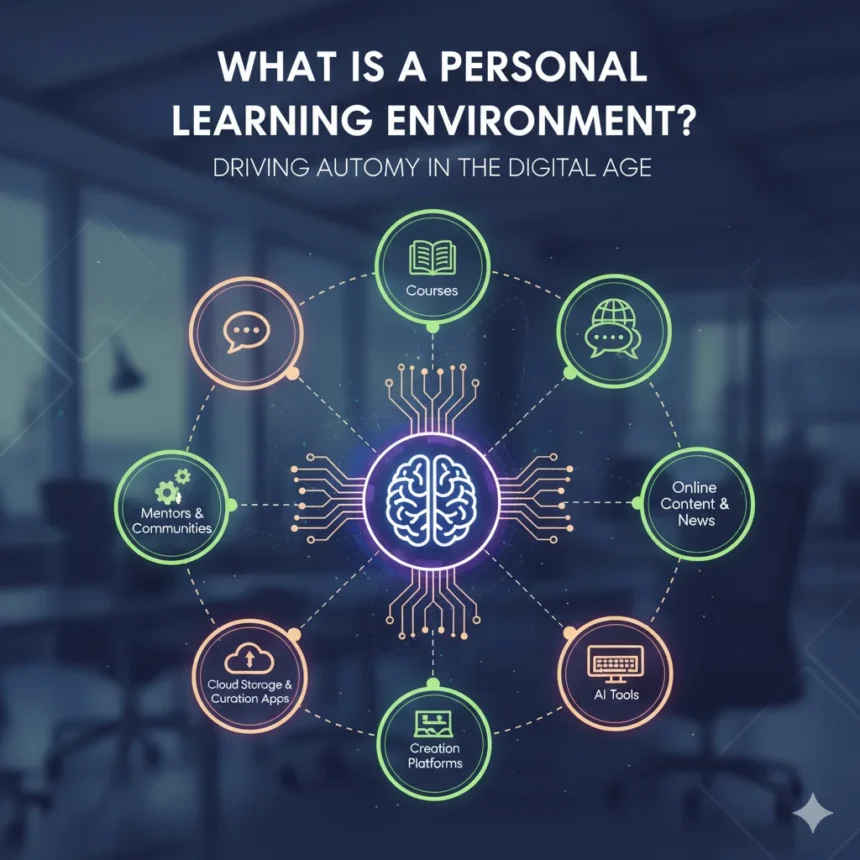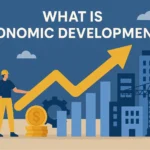The modern pace of work, technology, and information flow demands more than annual training seminars or rigid learning management systems (LMS). We live in an era of continuous upskilling, where knowledge acquisition is no longer a scheduled event but an ongoing, fluid process. To keep up, both individuals and major enterprises are turning toward a highly adaptable concept: the Personal Learning Environment.
In simplest terms, what is a personal learning environment? It is the customizable, dynamic collection of tools, communities, resources, and services that an individual uses to manage, curate, and achieve their own learning goals. Unlike a traditional LMS, which dictates the content and pathway, the PLE is owned and shaped entirely by the learner. It’s not a single piece of software; it’s an ecosystem tailored to an individual’s unique needs, preferences, and professional context.
For general readers, the PLE offers unparalleled flexibility. For enterprise decision-makers, understanding and supporting PLEs is rapidly becoming the key to building an agile, highly skilled, and self-directed workforce capable of navigating rapid technological change.
The Core Components of a Modern PLE Ecosystem
A robust Personal Learning Environment is built on three interconnected pillars that support the learner’s journey from finding information to internalizing it and applying it.
Digital Tools and Platforms
These are the technological “scaffolding” of the PLE. They are selected by the learner based on their function and usability.
- Curation Tools: RSS readers (e.g., Feedly), bookmark managers, and note-taking apps (e.g., Notion, Evernote) used to gather, filter, and organize relevant information from the web.
- Creation Tools: Blogs, wikis, video editors, or coding sandboxes (e.g., GitHub) used by the learner to practice and externalize their knowledge through content creation.
- Communication Tools: Social platforms, discussion forums, internal Slack channels, or LinkedIn groups used for peer-to-peer learning and networking with subject matter experts.
Content Sources
The content within a PLE is decentralized and spans formal and informal sources, moving far beyond pre-packaged corporate courses.
- Formal: Access points to traditional LMS content, external certification programs, and university open courseware (MOOCs).
- Informal: Podcasts, specialized newsletters, YouTube tutorials, technical documentation, industry whitepapers, and micro-learning apps. This constitutes the vast majority of continuous learning.
Personal and Professional Networks
The most potent element of a PLE is the network effect. Learning rarely happens in a vacuum; others contextualize it. This pillar involves the people and communities that provide feedback, motivation, and collaboration.
- Mentors and Coaches: Direct connections offering personalized guidance.
- Peers and Communities of Practice (CoPs): Groups (both internal and external) that allow for knowledge sharing, troubleshooting, and staying current with industry best practices.
PLE vs. LMS: A Fundamental Difference in Approach
One of the most common points of confusion is the relationship between an LMS (Learning Management System) and a PLE. They are not mutually exclusive; they are complementary, but serve different purposes.
| Feature | Learning Management System (LMS) | Personal Learning Environment (PLE) |
|---|---|---|
| Ownership | Owned and controlled by the institution (HR/L&D) | Owned and controlled by the individual learner |
| Content | Centralized, static, mandatory courses, assessments | Decentralized, dynamic, curated, informal, contextual |
| Pathway | Linear, prescribed, standardized for all users | Non-linear, adaptive, responsive to real-time needs |
| Goal | Compliance, tracking, standardized skill development | Continuous competence, autonomy, personal growth |
While an LMS is crucial for compliance training, onboarding, and structured skill standardization, it represents only the formal side of the learning equation. A PLE integrates the LMS as one resource alongside countless others, acknowledging that over 70% of professional learning happens outside structured training.
Why Enterprise Decision-Makers Must Embrace Learner Autonomy
The shift from a centralized LMS model to a decentralized, individual what is a personal learning environment model is not just a trend; it’s a necessity for modern competitive advantage. Enterprises benefit from this autonomy in several profound ways:
Fostering Continuous Organizational Agility
When employees are empowered to identify and fill their own knowledge gaps in real-time, the organization as a whole becomes more agile. Employees do not wait for the next quarterly training schedule; they use their PLE to find the solution immediately, speeding up problem-solving and innovation cycles. This reduces dependencies on central L&D teams for every niche skill.
Maximizing Engagement and Retention
Mandatory, one-size-fits-all training is often met with low engagement. A PLE, by contrast, is inherently personalized. When learning is self-directed and aligned with an employee’s professional aspirations and current projects, motivation skyrockets. Offering the freedom to build a PLE is a powerful tool for retention, showing employees that the organization trusts and invests in their individualized growth trajectory.
Future-Proofing Skills at Scale
In fast-moving sectors like tech, finance, and manufacturing, the time it takes L&D to build a formal course on a new software or regulation means the content is often outdated upon release. By leveraging a PLE, employees are constantly connected to real-time, expert-generated content (blogs, open source communities, technical forums). The workforce collectively anticipates future skill needs and updates its competencies faster than any centrally managed system ever could.
Building and Optimizing Your PLE
Adopting a PLE mindset requires a change in perspective: viewing learning as a daily act of curation and creation, rather than passive consumption.
Step 1: Define Your Learning Gaps and Goals
The first step in defining what is a personal learning environment is for you is identifying what you need to know and why. Start by mapping your current role requirements against your future aspirations. Are you seeking to master a new programming language, understand global regulatory changes, or improve executive communication? Clear goals allow for targeted curation.
Step 2: Curate Your Technology Stack
Be intentional about the tools you use. Don’t just rely on social media feeds. Instead, build a dedicated digital space for learning:
- News Aggregation: Subscribe to industry-specific newsletters and blogs. Use an RSS reader to manage the flow of information without distraction.
- Knowledge Synthesis: Select a dedicated note-taking system (digital or analog) to synthesize disparate pieces of information, forcing yourself to process and organize new concepts.
- Networking: Actively seek out and follow subject matter experts on platforms like LinkedIn or specialized industry forums. Don’t just read, ask questions.
Step 3: Practice Curation and Creation
The mark of a mature PLE user is the transition from a consumer to a curator and creator. To truly cement knowledge, you must do something with it. Writing a summary of a new concept, creating a tutorial video for a team member, or simply tagging and summarizing a resource for later retrieval transforms passive consumption into active learning. This process of filtering, reflecting, and sharing is what gives the PLE its continuous power.
Conclusion
The traditional era of standardized, top-down learning is waning. The Personal Learning Environment represents the decentralized, dynamic future of skill development, placing the responsibility and the power directly into the hands of the learner. By encouraging the creation and refinement of PLEs, individuals gain relevant, immediate, and deep expertise, while organizations build the adaptable, continuous learning culture required to thrive in the 21st-century economy. Embrace the digital ecosystem around you; your journey toward true learner autonomy starts now.




